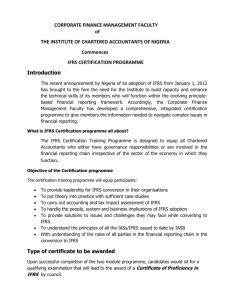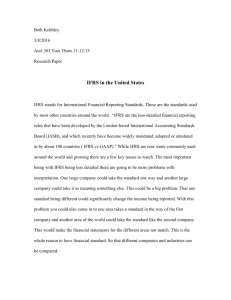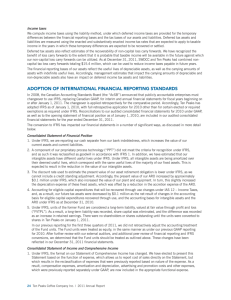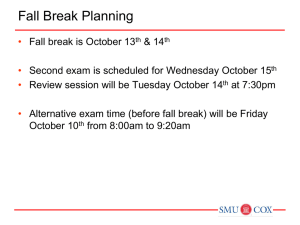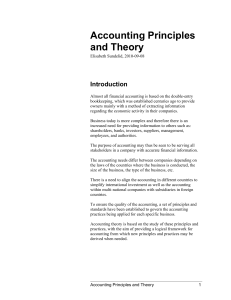ACCT351COM CASE3 MEMO
advertisement
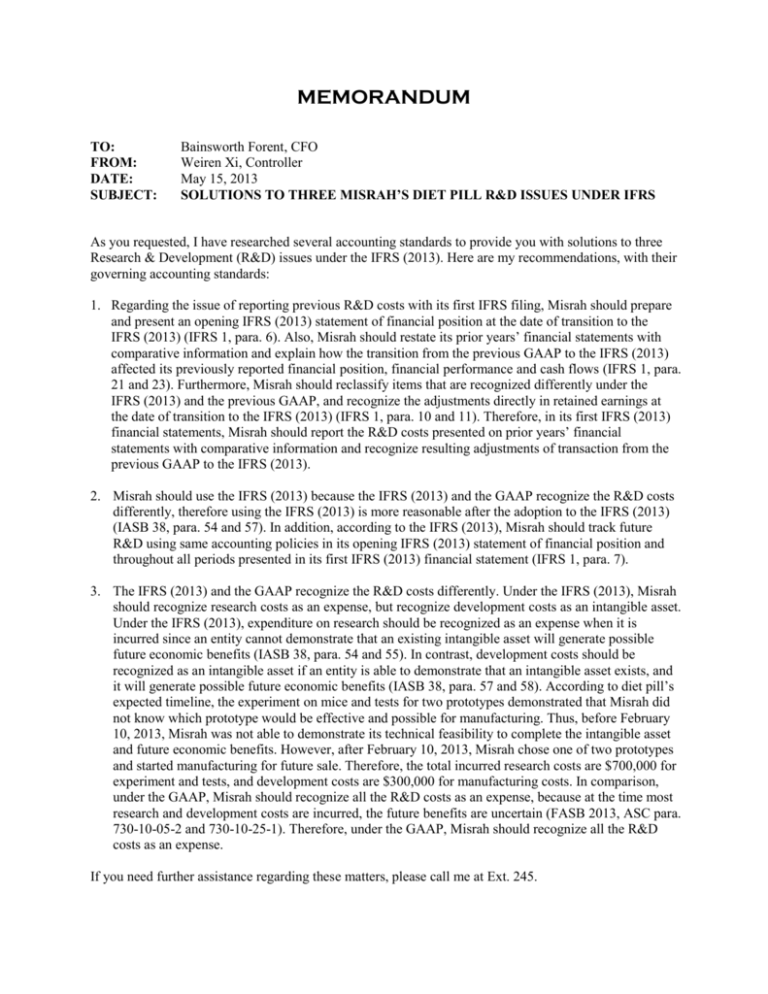
MEMORANDUM TO: FROM: DATE: SUBJECT: Bainsworth Forent, CFO Weiren Xi, Controller May 15, 2013 SOLUTIONS TO THREE MISRAH’S DIET PILL R&D ISSUES UNDER IFRS As you requested, I have researched several accounting standards to provide you with solutions to three Research & Development (R&D) issues under the IFRS (2013). Here are my recommendations, with their governing accounting standards: 1. Regarding the issue of reporting previous R&D costs with its first IFRS filing, Misrah should prepare and present an opening IFRS (2013) statement of financial position at the date of transition to the IFRS (2013) (IFRS 1, para. 6). Also, Misrah should restate its prior years’ financial statements with comparative information and explain how the transition from the previous GAAP to the IFRS (2013) affected its previously reported financial position, financial performance and cash flows (IFRS 1, para. 21 and 23). Furthermore, Misrah should reclassify items that are recognized differently under the IFRS (2013) and the previous GAAP, and recognize the adjustments directly in retained earnings at the date of transition to the IFRS (2013) (IFRS 1, para. 10 and 11). Therefore, in its first IFRS (2013) financial statements, Misrah should report the R&D costs presented on prior years’ financial statements with comparative information and recognize resulting adjustments of transaction from the previous GAAP to the IFRS (2013). 2. Misrah should use the IFRS (2013) because the IFRS (2013) and the GAAP recognize the R&D costs differently, therefore using the IFRS (2013) is more reasonable after the adoption to the IFRS (2013) (IASB 38, para. 54 and 57). In addition, according to the IFRS (2013), Misrah should track future R&D using same accounting policies in its opening IFRS (2013) statement of financial position and throughout all periods presented in its first IFRS (2013) financial statement (IFRS 1, para. 7). 3. The IFRS (2013) and the GAAP recognize the R&D costs differently. Under the IFRS (2013), Misrah should recognize research costs as an expense, but recognize development costs as an intangible asset. Under the IFRS (2013), expenditure on research should be recognized as an expense when it is incurred since an entity cannot demonstrate that an existing intangible asset will generate possible future economic benefits (IASB 38, para. 54 and 55). In contrast, development costs should be recognized as an intangible asset if an entity is able to demonstrate that an intangible asset exists, and it will generate possible future economic benefits (IASB 38, para. 57 and 58). According to diet pill’s expected timeline, the experiment on mice and tests for two prototypes demonstrated that Misrah did not know which prototype would be effective and possible for manufacturing. Thus, before February 10, 2013, Misrah was not able to demonstrate its technical feasibility to complete the intangible asset and future economic benefits. However, after February 10, 2013, Misrah chose one of two prototypes and started manufacturing for future sale. Therefore, the total incurred research costs are $700,000 for experiment and tests, and development costs are $300,000 for manufacturing costs. In comparison, under the GAAP, Misrah should recognize all the R&D costs as an expense, because at the time most research and development costs are incurred, the future benefits are uncertain (FASB 2013, ASC para. 730-10-05-2 and 730-10-25-1). Therefore, under the GAAP, Misrah should recognize all the R&D costs as an expense. If you need further assistance regarding these matters, please call me at Ext. 245. Bainsworth Forent, CFO May 15, 2013 Page 2 REFERENCES Financial Accounting Standards Board (FASB). (2013). Accounting Standards Codification (ASC) paragraph 730-10-05-2, Research and Development – Overall – Overall and Background. Retrieved May 14, 2013, from http://asc.fasb.org/ Financial Accounting Standards Board (FASB). (2013). Accounting Standards Codification (ASC) paragraph 730-10-25-1, Research and Development – Overall – Recognition. Retrieved May 14, 2013, from http://asc.fasb.org/ International Accounting Standards Board (IASB). (2013). International Accounting Standard 38, Intangible Assets. International Accounting Standards Board (IASB). (2013). International Financial Reporting Standard 1, First Time Adoption of International Financial Reporting Standards.


